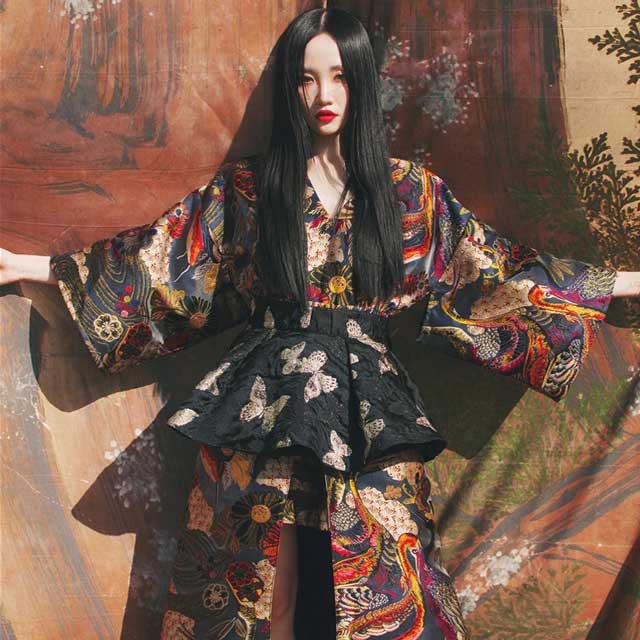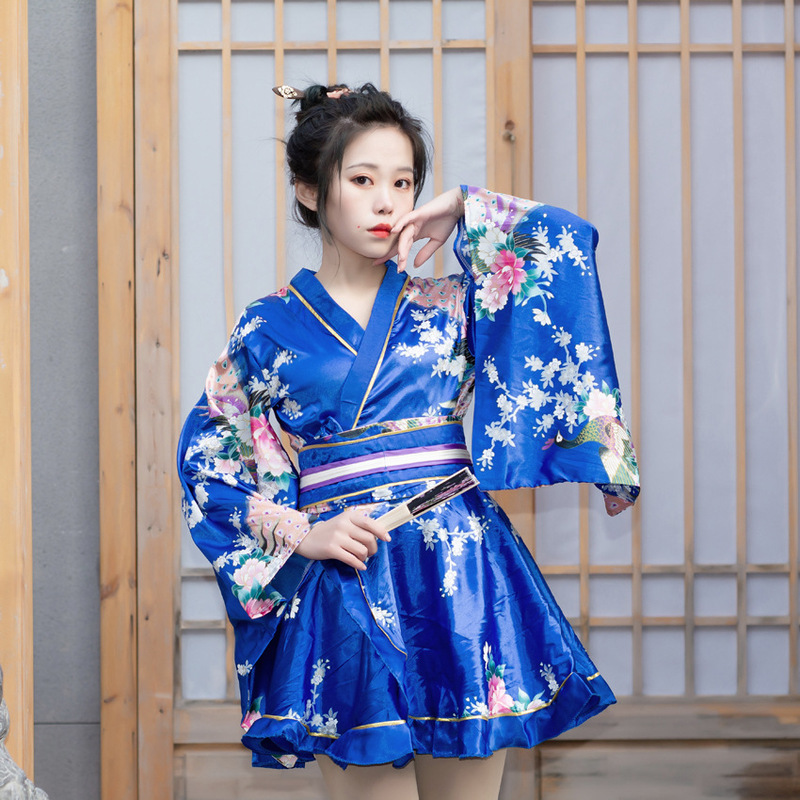The kimono, a traditional Japanese garment, has inspired fashion designers across the globe to create robe kimono that combine traditional elegance with contemporary style. Kimono dresses embody a blend of cultures, merging the distinctive Japanese aesthetic with modern fashion sensibilities. This article explores the evolution of the kimono dress, its design elements, and its versatility in today’s fashion world.
The Evolution of the Kimono Dress
From Traditional Garment to Fashion Statement
Originally, the kimono was a Japanese garment comprising simple lines and elegant fabrics, embodying the cultural aesthetics of Japan. Over centuries, it evolved but maintained its iconic T-shaped structure. As global interactions increased, the beauty of the kimono caught the eye of Western fashion designers, leading to the creation of the kimono dress. This adaptation preserved the original garment’s essence while infusing it with elements appealing to a broader audience. By blending the traditional kimono with aspects of western gowns, such as figure-hugging silhouettes and varied lengths, designers created a piece that resonates on global runways.

Materials and Craftsmanship: A Testament to Quality
The charm of the kimono dress lies not only in its design but also in the materials and craftsmanship involved in its creation. Traditional kimono fabrics, such as silk, cotton, and linen, are often used, providing both comfort and elegance. The intricate patterns—ranging from floral to abstract—are usually dyed or embroidered, showcasing exceptional skill. Modern interpretations might incorporate synthetic fabrics for durability and ease of care, demonstrating a balance between tradition and practicality. The attention to detail in every stitch reflects a dedication to quality that makes each kimono dress unique.
Design Elements that Define the Kimono Dress
Silhouette and Structure:
An Echo of Timeless Elegance At the heart of the kimono dress lies its distinctive silhouette, reminiscent of the traditional kimono’s flowing lines, while incorporating contemporary elements such as belts and sashes to accentuate the waist. The dress may feature variations in length, ranging from mini to full-length, allowing for adaptability to different occasions and personal preferences. Furthermore, the incorporation of wide sleeves, a characteristic element of traditional kimonos, lends an air of drama and elegance. Modern interpretations often introduce innovative elements, such as slits or tailored fits, to infuse a touch of contemporary allure into the timeless silhouette.

Color and Pattern: Embracing Versatility and Creativity
While traditional kimonos are known for their subdued colors and seasonal patterns, kimono dresses offer a canvas of increased versatility for designers to explore. Bold color combinations and eclectic patterns are often embraced, allowing the dresses to stand out in both formal and casual settings. Floral motifs, a timeless symbol in Japanese culture, continue to be prominent in kimono dresses, serving as a bridge between tradition and current fashion trends. This fusion of traditional Japanese aesthetics with modern design sensibilities enables a diverse range of styles to cater to varied tastes, showcasing a harmonious blend of heritage and contemporary expression.
Cultural Significance and Global Appeal
The allure of the kimono dress extends far beyond its aesthetic appeal, as it serves as a symbol of cultural heritage and timeless elegance. Its unique design elements and the fusion of tradition with modernity have not only captured the attention of fashion enthusiasts but also fostered a cross-cultural appreciation for Japanese craftsmanship and artistic sensibilities. Through the adaptation of traditional kimono elements into modern dress designs, the garment retains its cultural significance while embracing an international audience, underscoring its enduring legacy as a sartorial masterpiece that transcends geographical borders.

Versatility and Styling of the Kimono Dress
Day to Night: A Dress for All Occasions
The kimono dress’s versatility is one of its most appealing qualities. With the right accessories, it can transition smoothly from a day at the office to an evening out. For a daytime look, pairing the dress with sandals or flats creates a laid-back yet sophisticated ensemble. For nighttime, switching to high heels and adding statement jewelry can elevate the outfit to formal elegance. The dress’s adaptability makes it a valuable addition to any wardrobe, suitable for various events and seasons.
Transitioning into the Twilight
As the sun begins to set, the kimono dress can be transformed into an ensemble fit for the vibrant nightlife. This is where the flexibility of the garment truly shines. Swapping the sandals for a pair of strappy high heels adds an instant dose of glamour, as does the addition of statement jewelry, such as chandelier earrings or a bold cuff bracelet. The wide sleeves of the kimono dress flirt with the evening breeze, offering both a dramatic flair and a nod to its traditional origins. Those looking for an additional layer of sophistication might opt for a bejeweled clutch and a swipe of red lipstick, turning heads at any evening soiree. For cooler evenings, a sleek leather jacket or a faux-fur stole can be draped over the kimono dress, adding both warmth and a hint of luxe to the entire outfit.

Versatility Across the Calendar
The magic of the kimono dress is not bound by the time of day alone but extends seamlessly across seasons. In warmer months, lightweight fabrics keep the wearer cool, while the dress’s loose cut allows for a generous breeze. As the weather cools down, the kimono dress can be paired with leggings or tights, and its roomy sleeves allow for layering underneath with a slim thermal top for added insulation. Season-appropriate accessories, such as a summer hat or a warm scarf, can further tailor the dress to the occasion. Whether it’s a sun-drenched summer afternoon or a crisp autumn evening, the kimono dress stands as a reliable choice that promises both style and ease, making it a truly all-occasion piece in any fashion connoisseur’s wardrobe.

Conclusion
The kimono dress stands as a testament to the enduring allure of traditional Japanese aesthetics and their seamless integration into modern fashion. Its evolution from a cultural garment to a global fashion statement highlights the ways in which clothing can transcend boundaries and become a medium for cultural exchange. Through its design, versatility, and styling flexibility, the kimono dress continues to captivate fashion enthusiasts around the world, proving that elegance and tradition can indeed go hand in hand with contemporary style.
